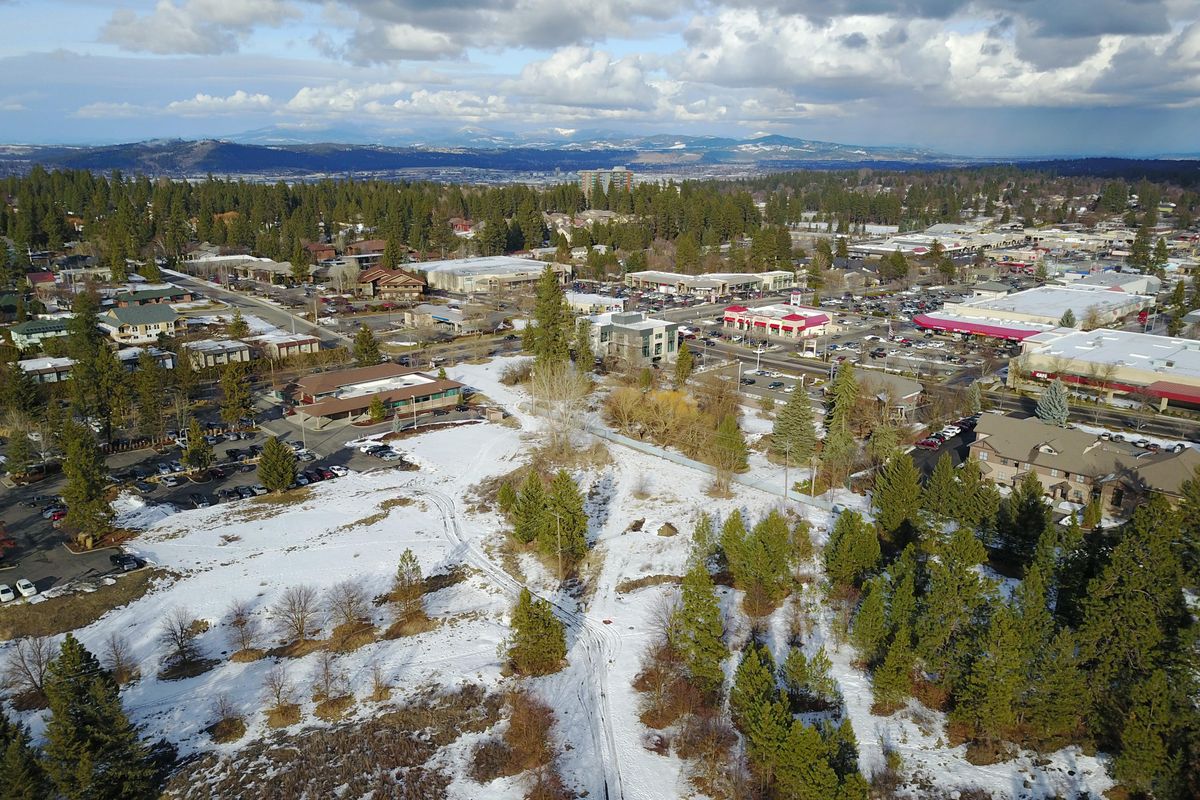Greenstone Homes: No arterial in proposed 25-acre South Hill development

A proposal to develop 25 acres of vacant land on Spokane’s South Hill – land that neighbors used as a de facto park for decades – is moving forward, and officials at Spokane City Hall said they are helping clear the way for the development.
The project – by developer Greenstone Homes, best known for Kendall Yards downtown – would remake an old dairy and tree farm southwest of the busy corner of 29th Avenue and Southeast Boulevard. At present, the land is largely forested, and interlaced with impromptu pathways. The development would bring 230 new residential units and 70,000 square feet of commercial space.
When the plans were made known to the public earlier this year, neighbors decried the idea, primarily due to worries of increased traffic from the development.
Jim Frank, Greenstone’s founder and CEO of its commercial arm, said the pushback came because of misinformation out of City Hall, and now the neighborhood is behind the plan.
City engineers, Frank said, had asserted that an extension of Crestline Street as a major arterial had to be included in the housing development. That requirement turned out to be false, Frank said.
“We never wanted to run the road through. Our submittal to the city didn’t have the road running through it,” Frank said. “We then created an alternate plan that ran it through, because I didn’t want to be in a position in having my proposal denied.”
During a plan review process at the city, Greenstone discovered that the extension of Crestline was not part of the city’s comprehensive plan, an official document that guides development within the city.
“It was just aspirational on part of the staff, that they wanted it. They put it on a map, but the map doesn’t have any binding authority,” Frank said. “So we said forget this, we’re just going to propose our project.”
The Garden District, as it’s being called, will be a “small urban mixed-use neighborhood with a pedestrian focus and extensive trails and open space,” according to a Greenstone document. Housing will be “economically diverse” with stand-alone homes next to multifamily complexes. The new neighborhood will have a “strong public realm” that won’t be designed “around cars.” Instead, the development “will prioritize pedestrians centering on bike paths, pedestrian laneways and community open space.”
The property has long been slated for development. It was owned for decades by the late John Sonneland, a doctor who ran for Congress numerous times in the 1970s, ’80s and ’90s. He died in 2016. Greenstone is partnering with the Sonneland family on the project.
City Councilwoman Lori Kinnear, however, said the Crestline extension is a part of the city’s arterial plan, and getting it off the books will take some doing. She is asking to have it removed so the project can proceed.
“I submitted a comp plan change request. That’s a resolution, which council can do,” Kinnear said. “That means that it will go before Plan Commission. I just wanted to get it out to the public. This is simply a way to let the neighborhood have a say.”
The council vote on Kinnear’s resolution will take place Monday. In Kinnear’s plan, the public would then have two hearings at which to testify about the project, first before the city’s Plan Commission and then before the City Council.
In the meantime, Kinnear and Councilman Breean Beggs have asked for a compilation of all traffic studies and alternatives done on the South Hill between Freya and Perry streets.
“We’re looking at that corridor. How it functions now and how it will function under different scenarios,” she said. “We need to look at this holistically. We have to look at this as big picture, not in isolation.”
Kinnear noted the South Hill has difficult topography that complicates transportation planning.
Carol Tomsic, chairwoman of the Lincoln Heights Neighborhood Council, said she did not speak for the neighborhood as a whole, but she does support Greenstone’s project now that it does not include a major vehicular thoroughfare.
“It gives you more open space, it saves the urban trees, it doesn’t bisect the business district,” she said. “But we’re quite happy that it doesn’t include the extension.”
Greenstone’s plans help retain some of the area’s charm, Tomsic said, which was crisscrossed with walking paths.
“We want a walkable neighborhood,” she said. “With the open space design, it retains a lot of the bicycle and pedestrian paths, which people have used to get to the library, to get everywhere.”
Frank, with Greenstone, said he is not aware of what the City Council is considering since he has kept himself at arm’s length from the political process.
But as he and his son, Joe, who is the CEO of Greenstone Homes, have said since they proposed the project, they do not want a major road. They would prefer a residential street that is amenable to pedestrians and cyclists.
“We’re not going to advocate the position of having a road run through there, and we don’t want it,” he said. “At the end of the day, that put us on the same page as everyone else in the neighborhood.”